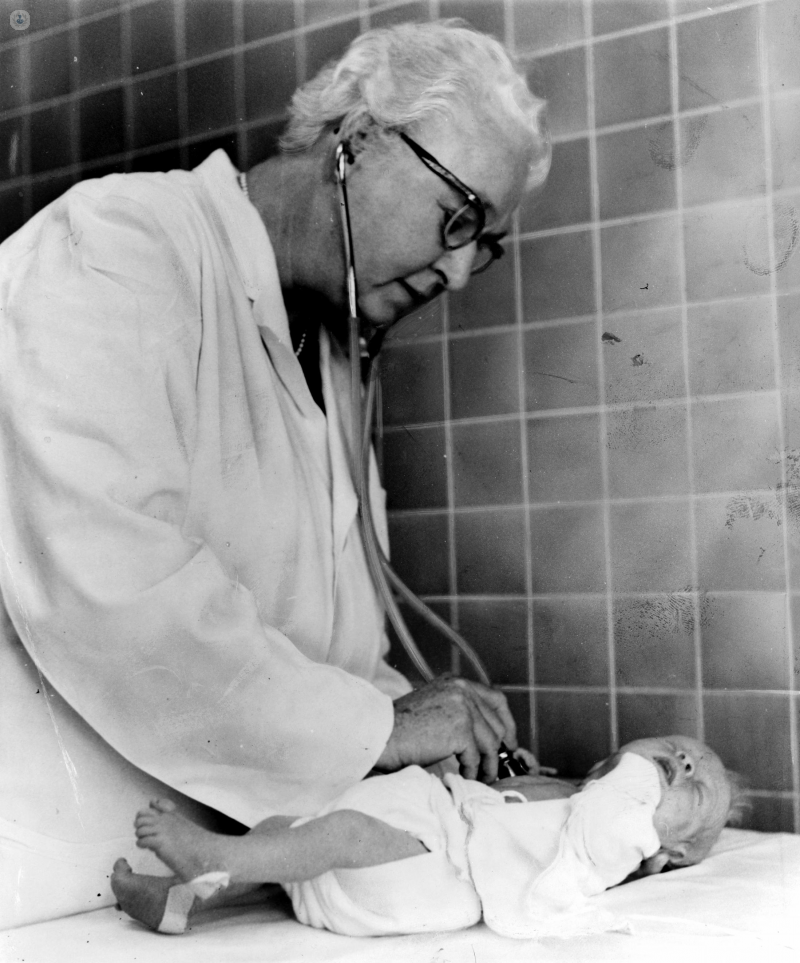Apgar test
Dr Harsha Bilolikar - Paediatrics
Created on: 12-29-2015
Updated on: 10-16-2023
Edited by: Jay Staniland
What is the Apgar score?
The Apgar score is a quick way of measuring the health of a newborn, in the first minute after birth and in the fifth minute. It was developed by Virginia Apgar, an anaesthesiologist in the US, in 1952 as a means of quantifying the effect of anaesthesia administered during birth on babies. The test is usually carried out by a consultant paediatrician.

What does the Apgar test consist of?
The Apgar test involves examing the baby, taking into account five vital signs, and making a score of each section:
-
Appearance (A):
This is an assessment of the skin colouration. A score of 2 is given for pink or rosy complexion, 1 for bluish extremities, and 0 for pale or blue appearance. -
Pulse (P):
This is a measure of the heart rate. A score of 2 is given if the heart rate is above 100 beats per minute, 1 if it is below 100, and 0 if there is no detectable pulse. -
Grimace response, or reflexes (G):
This is an assessment of the newborn's reflexes and response to stimulation. A score of 2 is given if the baby cries vigorously or actively resists stimulation, 1 if the response is weak or minimal, and 0 if there is no response. -
Activity (A):
This evaluates muscle tone or activity. A score of 2 is given if the baby displays active movements, 1 if there's some flexion or resistance, and 0 if the limbs are floppy or limp. -
Respiration (R):
This is a measure of the baby's breathing rate and effort. A score of 2 is given if the baby is crying well and breathing effectively, 1 if the breathing is slow or irregular, and 0 if there's no spontaneous breathing.
The words together form the acronym APGAR. Each category is given a score from 0 to 2, and added together to give a total out of 10.
Why is the Apgar test performed?
The test gives a quick snapshot of the newborn's health and overall condition, and helps the paediatrician to make a rapid assessment of the medical condition, and take necessary action. The test is not a comprehensive assessment of the baby's health, and should be followed by a more thorough assessment by the paediatrician.
Meaning of abnormal Apgar score
If the sum of the results is less than 7, it means that the baby needs medical attention. Low scores usually are present after caesarean section, a difficult delivery or presence of fluid in the baby's airway. So, if the score is low, oxygen may be needed to help the baby’s breathing, or physical stimulation so that the heart beats healthily.
A low rating does not mean that the newborn will have health problems in the future.
